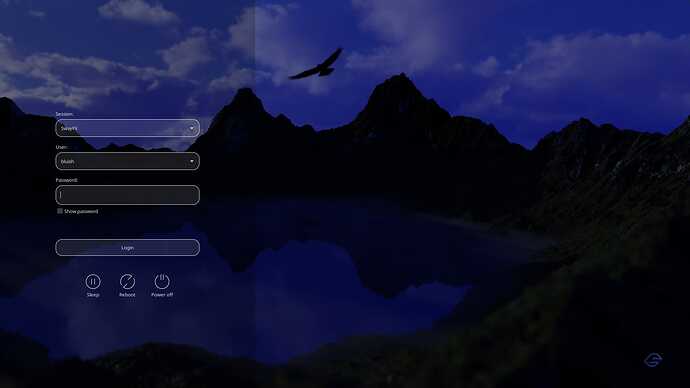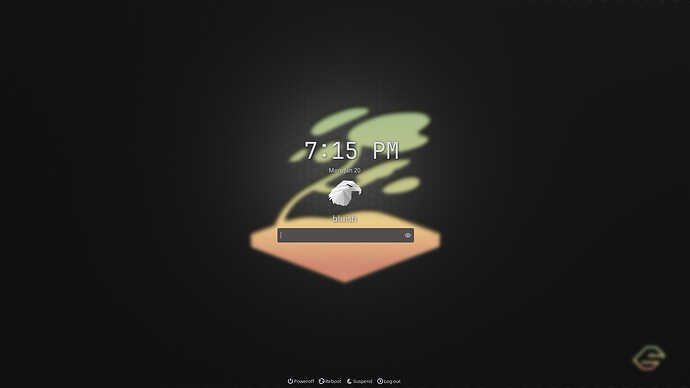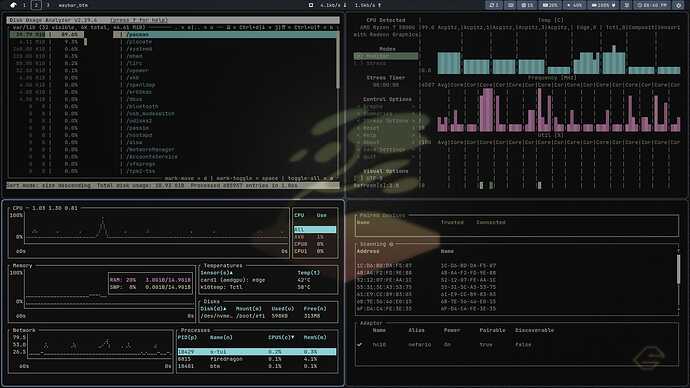As the Garuda team prepares for a new release, I have been finalizing some changes to the Sway edition. If anyone is interested in kicking the tires before the release, go ahead and grab the new ISO off the builds page (link below) and let me know what you think.
What’s new with Garuda Sway?
nwg-hello
The Greetd greeter has been changed from ReGreet to nwg-hello.
Nwg-hello is another fantastic Piotr Miller project. It looks really slick and works great!
gtklock
The lockscreen application has been switched from to gtklock.
Swaylock has always been fine, but lacking in features. For example, simple things like displaying the time on the lockscreen are not supported. I switched our Sway edition to swaylock-effects at some point; while it does have a lot of nice extra features, over time I have noticed several issues crop up–including the lock screen not displaying properly. Unfortunately, it doesn’t appear to be maintained anymore so I started looking for other options.
Gtklock works well and supports adding modules for incorporating extra features, like gtklock-userinfo-module for adding user info to the lockscreen and gtklock-powerbar-module for adding power controls. All in all, it has come together nicely and works very reliably.
Waybar overhaul
The waybar has a new lick of paint, featuring a cleaner look and some fancy new features.
![]()
There are so many super cool Waybar modules, but it doesn’t take long for the bar to get really crowded. To have the best of both worlds, I have added a few module groups, which can be expanded to access more modules or collapsed to hide them away.
On hover, the custom update module opens up to a second custom module with on-click actions for launching Pacseek or garuda-update. Similarly, the power module is now a group with all the power options inside.
I made a few GIFs to illustrate what I am talking about. They turned out really slow for some reason, but still get the idea across I think.
Update group and power group
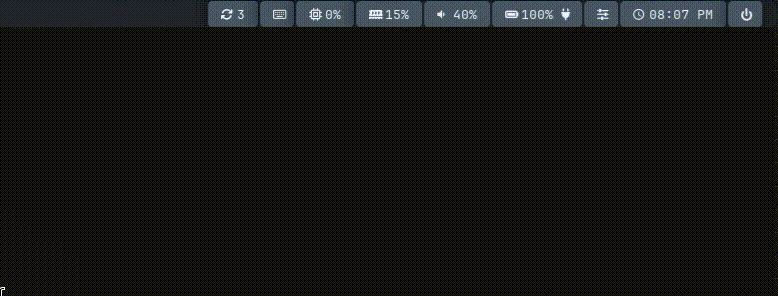
The CPU module houses the resources group, which has modules for temperature and disk inside. This group is a click to open, then another click to collapse it shut again (so it can be left open on the bar while you are working if you wish).
Resources group

The settings group has a handful of modules (idle inhibitor, backlight, Bluetooth, and the tray) that are useful to have close at hand, but are not necessarily interesting or informative enough to want to look at them all day long.
Settings group
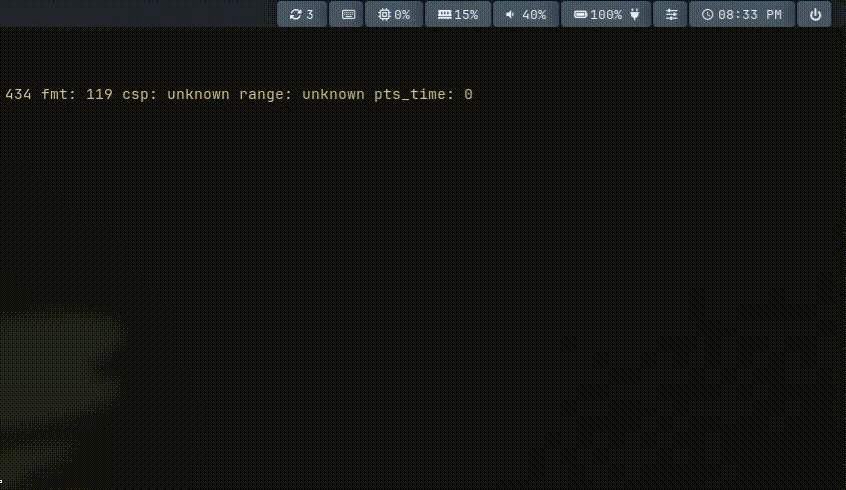
It’s pretty easy to move modules in and out of groups so people can make changes according to their preference.
A lot of the module tooltips have been updated as well, to call out the applications they launch with the on-click actions.
TUI apps
There are some new additions to the lineup of TUI apps that can be launched from Waybar modules, like s-tui, dua, bottom, battop, and bluetui.
- The custom Pacman module launches the mighty Pacseek: GitHub - moson-mo/pacseek: A terminal user interface for searching and installing Arch Linux packages. The custom updates module also launches
pacseek -ufor reviewing upgradeable packages. - The temperature module launches
s-tui: GitHub - amanusk/s-tui: Terminal-based CPU stress and monitoring utility - The disk module launches
dua(ininteractivemode): GitHub - Byron/dua-cli: View disk space usage and delete unwanted data, fast. - The memory module launches bottom: GitHub - ClementTsang/bottom: Yet another cross-platform graphical process/system monitor.
- The battery module launches
battop: GitHub - svartalf/rust-battop: Interactive batteries viewer - The Bluetooth module launches
bluetui: GitHub - pythops/bluetui: 🛜 TUI for managing bluetooth on Linux. - The clock module launches calcurse: GitHub - lfos/calcurse: A text-based calendar and scheduling application
And of course, the network module launches nmtui.
These new changes will not be in the ISO on the downloads page until the new release comes out. If anyone is interested in taking it for a spin in the meantime, you can grab the 250119 ISO off of the builds page here: https://iso.builds.garudalinux.org/iso/garuda/sway/250119/
Don’t forget, Nvidia users need to jump through extra hoops to use Sway because the Sway project officially does not support Nvidia drivers. If you have Nvidia hardware and are brave enough to jump through the hoops, you can find guidance here: Install Nvidia Drivers on Garuda Sway | Garuda Linux wiki
